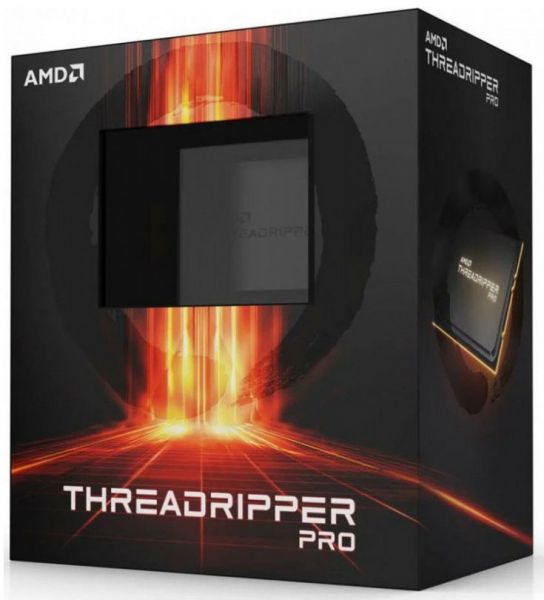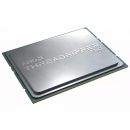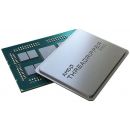Preču Katalogs
- Būvmateriāli
- Reģipsis - profili
- Siltumizolācijas materiāli
- Akmens vate
- Minerālvate
- Beramā vate
- Ekovate
- Putuplasts (EPS)
- Vairāk
- Ekstrudētais putuplasts (XPS)
- Plātņveida pamati topā
- Fasādes vate
- Kokšķiedras vate
- Siltumizolācija ar foliju
- Keramzīts
- Poliuretāna loksnes
- Ventilējamo fasāžu plāksnes
- Skaņas izolācija
- Cauruļu siltumizolācija
- Kokšķiedras plāksnes
- Izsmidzināmā siltumizolācija
- Mīkstā vate
- Cietā vate
- Plāksnes
- Jumta segumi
- Celtniecības plēves
- Bloki, ķieģeļi
- Armatūras un metāls
- Fasādes siltināšanas materiāli
- Skrūves, naglas, būvstiprinājumi
- Kokmateriāli
- Sausie maisījumi, špakteles
- Špakteles
- Gatavās špakteles
- Apmetumi
- Līmēšanas un armēšanas javas
- Dekoratīvie apmetumi
- Vairāk
- Cements / betons
- Grīdu izlīdzinošie maisījumi
- Mūrjavas / bloku līmes
- Flīžu līmes
- Bezrukuma javas, remontsastāvi
- Cementa hidroizolācija
- Tehniskā sāls, ledus kausētāji
- Māls, smiltis, kaļķis, ģipsis
- Epoksīda grīdas
- Mikrocements
- Krāsas, lakas, antiseptiķi, eļļas
- Hermētiķi, putas, silikoni
- Līmes
- Lentas / līmlentas
- Gruntis, mastikas
- Apdare
- Durvis un logi
- Santehnika
- Tualetes podi
- Vannas
- Izlietnes
- Virtuves izlietnes
- Vannas istabas izlietnes
- Akmens masas izlietnes
- Metāla izlietnes
- Izlietnes ar skapīti
- Vairāk
- Sifoni izlietnēm
- Izlietnes smalcinātāji
- Izlietnes virs veļas mašīnas
- Izlietnes kājas
- Virtuves izlietnes maisītāji
- Vannas istabas izlietnes maisītāji
- Šķidro ziepju dozatori izlietnēm
- Atkritumu šķirošanas sistēmas
- Izlietnes stiprinājumi
- Izlietņu piederumi
- Ūdens maisītāji (jaucējkrāni)
- Dušas
- Vannas istabas aksesuāri
- Šķidro ziepju dozatori
- Dvieļu turētāji
- Tualetes papīra turētāji
- Vannas istabas plaukti
- Dušas aizkari
- Vairāk
- Dušas aizkaru stangas
- Vannas istabas paklāji
- Ziepju trauki
- Veļas grozi
- Dušas krēsli
- Tualetes poda birstes
- Glāzes un turētāji
- Roku žāvētāji
- Vannas istabas atkritumu tvertnes
- Roku balsti un rokturi
- Vannas istabas āķi un pakaramie
- Aksesuāri cilvēkiem ar kustību ierobežojumiem
- Vannas istabas mēbeles
- Kanalizācija
- Ūdens filtri
- Ūdens skaitītāji
- Santehnikas instrumenti
- Apkure un ūdensapgāde
- Radiatori
- Siltās grīdas ar ūdens apsildi
- Ūdens sildītāji (boileri)
- Sildītāji
- Elektriskās siltās grīdas, kabeļi
- Ūdens sūkņi
- Cauruļvadu sistēmas un veidgabali
- Pe caurules un veidgabali
- Ppr kausējamās caurules un veidgabali
- Lokanie savienojumi
- Daudzslāņu caurules un veidgabali (presējamie)
- Daudzslāņu veidgabali (kompresijas)
- Vairāk
- Misiņa veidgabali
- Kapara caurules un veidgabali
- Karbona (Oglekļa tērauda) caurules un veidgabali
- Siltumtrases
- Cauruļu stiprinājumi
- Pvc līmējamās caurules un veidgabali
- Dārza šļūtenes
- Tehniskās šļūtenes
- Ventiļi un krāni
- Krāsnis / kamīni
- Dvieļu žāvētāji
- Cauruļu siltumizolācija
- Apkures katli
- Izplešanās trauki, hidrofori, akumulācijas tvertnes
- Dūmvadi
- Apkures sistēmu aprīkojums
- Kurināmais
- Ventilācija un klimats
- Skārda ventilācija
- Ventilācijas lokanie vadi
- Plastmasas ventilācija
- Revīzijas lūkas
- Gaisa kondicionieri
- Ventilatori
- Ventilācijas restes
- Mitruma savācēji
- Tvaika nosūcēji
- Gaisa mitrinātāji
- Gaisa aizkari
- Roku žāvētāji
- Ventilācijas difuzori
- Jumta ventilācijas izvadi
- Gaisa dzesētāji
- Rekuperatori
- Izolācija ventilācijai
- Ventilācijas piederumi
- Dārzs
- Žogi
- Dārza tehnika
- Zāles pļāvēji
- Trimmeri, krūmgrieži
- Zāles pļāvēji traktori
- Zāles pļāvēji roboti
- Aeratori un skarifikatori
- Vairāk
- Frēzes, kultivatori
- Motorzāģi
- Dzīvžoga šķēres
- Lapu pūtēji
- Malkas skaldītāji
- Zaru smalcinātāji, šķeldotāji
- Akumulatora zaru šķēres
- Akumulatora zaru zāģi
- Daudzfunkcionālie dārza instrumenti
- Zemes veltņi
- Zemes urbji
- Augstspiediena mazgātāji
- Motorizētās un mehāniskās slotas
- Ūdens sūkņi
- Kompresori
- Akumulatora miglotāji
- Sniega pūtēji
- Dzinēji
- Kaisītāji
- Ģeneratori
- Dārza tehnikas piederumi
- Akumulatori un lādētāji
- Dārza instrumenti
- Siltumnīcas
- Dārza mēbeles
- Konteineri
- Dārza grili un kūpinātavas
- Dārza laistīšanas sistēmas
- Āra grīdas segumi
- Dārza mājas
- Instrumenti
- Instrumentu komplekti
- Skrūvgrieži un urbjmašīnas
- Zāģi
- Slīpmašīnas
- Perforatori un atskaldāmie āmuri
- Frēzes
- Naglu pistoles, skavotāji un kniedētāji
- Pneimatiskie instrumenti
- Ēveles
- Akumulatori un lādētāji
- Celtniecības tehnika
- Mazgāšanas un tīrīšanas iekārtas
- Mērinstrumenti
- Rokas instrumenti
- Darba apģērbi un apavi
- Elektroinstrumentu piederumi
- Krāsotāju instrumenti
- Seifi un naudas lādes
- Sildītāji
- Kāpnes, trepes, sastatnes
- Metināšanas iekārtas
- Elektriķu instrumenti
- Elektromateriāli
- Mēbeles un interjers
- Dārza mēbeles
- Galdi
- Augstumā regulējami galdi
- Rakstāmgaldi, datorgaldi
- Virtuves galdi / ēdamgaldi
- Tv galdiņi
- Kafijas galdiņi / žurnālgaldiņi
- Vairāk
- Biroja galdi, ofisa galdi
- Ēdamistabas komplekti
- Dārza galdi
- Bāra galdi (Stāvgaldi)
- Stikla galdi
- Koka galdi
- Bērnu galdi
- Augstumā regulējamu galdu kājas
- Augstumā regulējamu galdu virsmas un piederumi
- Saliekamie galdi
- Galda kājas
- Gultas
- Dīvāni
- Krēsli
- Skapji, kumodes un plaukti
- Matrači
- Interjera priekšmeti
- Mājas tekstils
- Apgaismojums
- Mēbeļu furnitūra
- Paklāji
- Viesistabas mēbeles
- Mīkstās mēbeles
- Virtuves mēbeles
- Guļamistabas mēbeles
- Vannas istabas mēbeles
- Biroja mēbeles
- Priekšistabas mēbeles
- Sports un atpūta
- Sadzīves tehnika
- Lielā sadzīves tehnika
- Iebūvējamā sadzīves tehnika
- Kafijas automāti un piederumi
- Mazā sadzīves tehnika
- Mikroviļņu krāsnis
- Elektriskās tējkannas
- Blenderi
- Rokas blenderi
- Virtuves kombaini
- Vairāk
- Mikseri
- Sviestmaižu tosteri
- Tosteri
- Multivārāmie katli
- Mini cepeškrāsnis
- Mini plītis
- Augļu žāvētāji
- Sulu spiedes
- Elektriskie grili
- Gaļas maļamās mašīnas
- Kafijas dzirnaviņas
- Virtuves svari
- Tvaika katli
- Maizes cepšanas krāsnis
- Taukvāres katli
- Dārzeņu smalcinātāji
- Piena putotāji
- Saldējuma mašīnas
- Vafeļu pannas
- Popkorna aparāti
- Uzkopšana
- Visi putekļu sūcēji
- Roboti putekļu sūcēji
- Rokas putekļu sūcēji
- Pelnu putekļu sūcēji
- Celtniecības putekļu sūcēji
- Vairāk
- Tvaika tīrītāji
- Logu tīrītāji
- Grīdas mazgāšanas iekārtas
- Piederumi putekļu sūcējiem
- Piederumi logu tīrītājiem
- Piederumi tvaika tīrītājiem
- Piederumi grīdas mazgāšanas iekārtām
- Grīdas slotas un birstes
- Apģērbu kopšanai
- Klimata kontrole
- Skaistumam un veselībai
- Lielā sadzīves tehnika
- Datortehnika
- Telefoni, Tv, Audio, Video
- Auto preces
-
Meklēt







